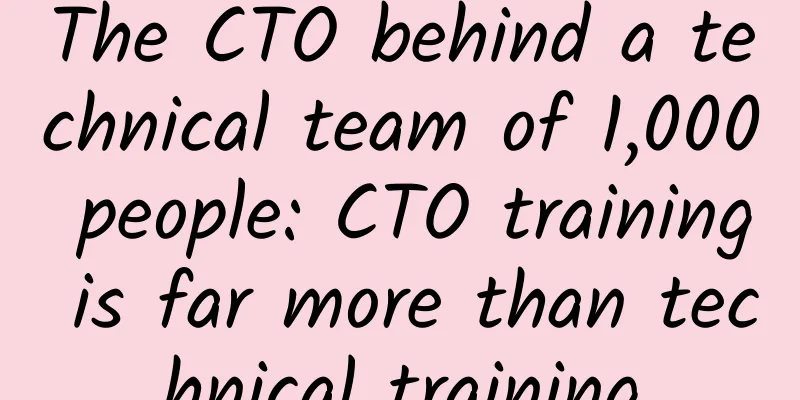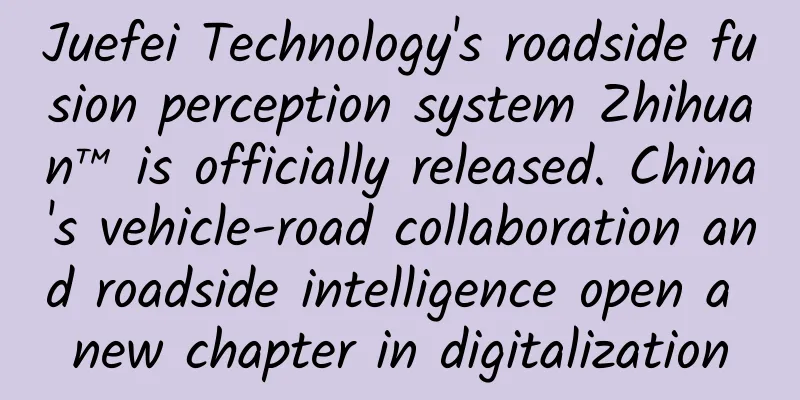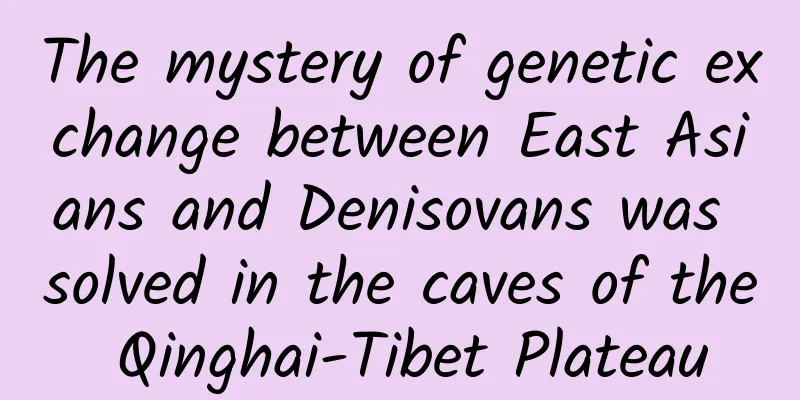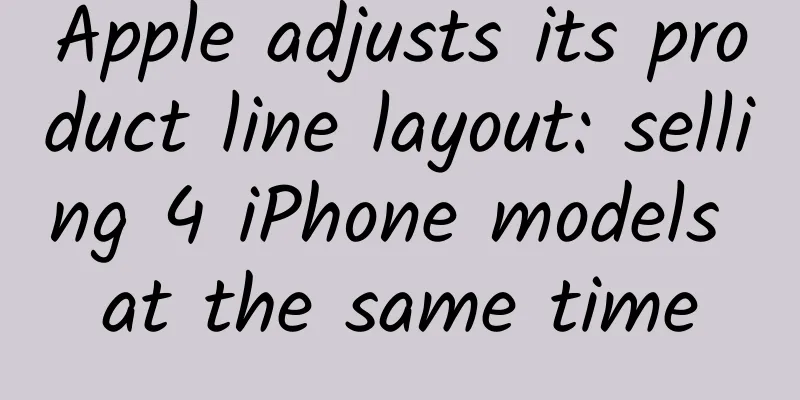The CTO behind a technical team of 1,000 people: CTO training is far more than technical training

|
[51CTO.com original article] While most technical people are still thinking about what competencies a startup team's CTO needs, some have already brought their technical team from less than 10 people seven years ago to a technical team of thousands of people. Talking about the experiences and stories of these seven years is much more exciting than discussing on paper whether "CTOs should write code". In reality, the challenges faced by CTOs are not limited to technical challenges, but also business challenges, team challenges, vision challenges, and so on. On September 9, at the opening class of the fourth season of 51CTO's CTO Training Camp, Gome Internet CTO Yu Binping shared his seven years of CTO experience at Gome and his understanding of the seven basic capabilities of CTO with 40 technical managers on site. We can also get a glimpse of some insights from these experiences. Capability 1 Core Goal Management: Clarify company goals, fully understand the business, and match technical goals with themAligned with company goals As a CTO, you must always be clear about the company's goals. Achieving the company's goals is the first priority, followed by the corresponding technical goals. Fully understand the business and be more familiar with the business than the business itself How to grow the business is a question that every technical manager must consider, and it is also the most fundamental embodiment of value. The business/technical staff of each small team only needs to understand the business they are responsible for, but as a CTO, you need to understand the business better than these people. While understanding each business, you must also connect all businesses and understand the business and planning of the entire company. Support business, promote business development It is often said that technology in the Internet industry must support business, but supporting the normal development of business is the cornerstone. Only on the basis of normal business development can we look at the present from the perspective of the future, further innovate, and drive/support business development through technology. The essential content under the core goal is the strategic level parts such as corporate vision and strategic goals, business goals, technical strategy, product planning, industry analysis, etc. and the tactical level parts such as system architecture and system construction. If the goals of the CTO and the company/CEO are inconsistent, there are only two options: either adjust to the same goal or leave. After the technical manager fully understands the company's goals, he or she must establish very clear technical goals. The main points are as follows:
Of course, these contents are not static, but a process of constant revision. Competency 2 Project Management: Extraction is the "basic skill", reasonable decomposition is the "basic norm", and communication is the coreNo matter how many departments there are, whether it is waterfall/agile development, or various goals of different sizes, everything can be broken down into small things, and each thing can be treated as a project. As shown in the figure below, there are nine major project managements on the left and four key links on the right. The common basic skills required of technical managers shown in the left picture are already well known to everyone, so I will not elaborate on them one by one. The right side shows the four key links of refining requirements, decomposing requirements, communicating, and launching on schedule .
Among them, communication, resource integration and cost control are three aspects that run through the entire management process regardless of the size of the project, and for most technical managers, they will encounter some difficulties. The following are some methods and approaches. communicate As mentioned earlier, communication is the core of project management, but many technical managers are not very good at communication. How to communicate with different people?
Resource Integration Resources play a big role in whether a project is completed or not. Before integration, resources are mostly scattered. To give full play to their effectiveness, transform them into competitive advantages, and create value for the enterprise, it is necessary to use scientific methods to configure and optimize resources from different sources and with different effects, so as to integrate valuable resources and give play to the amplification effect of "1+1>2" . Everyone knows that business, marketing and finance are internal resources of the enterprise, while partners, markets and investors are external resources. What needs to be noted here is that the direct supervisor/the supervisor of the supervisor is a very good internal resource, and using it well will achieve twice the result with half the effort. Cost Control Many people feel that technical management has nothing to do with cost, and that cost is something that is only considered in procurement. This is not the case. For example:
In summary, the core goals and project management shared above are the most basic competencies for technical management. Now let’s share the essential skills that a CTO must have, as shown in the following figure. As shown in the figure, the four major skills that a qualified CTO must possess are architecture construction, product capabilities, R&D capabilities, and infrastructure . Capability 3: Architecture construction: CTO should be proficient in large architecture, not just a single technical architectureWhen it comes to architecture, many people think it is the architecture of the code, which framework is used, whether it is open source or self-developed, etc. The architecture shared here is the big architecture that a CTO should be proficient in, as shown below: Business architecture. The business architecture is what the CTO should know first, which is the business composition and development plan of the company. It is important to understand the specific businesses and the relationships between them, whether they are related or independent. Application architecture. Depending on the business, decide what kind of system support to use, whether to purchase or develop in-house, and whether to divide vertically and independently or divide horizontally and logically. Data architecture. You must understand the current status of data flow. Many technical experts will ignore data architecture and do not know much about how data is stored, how it flows, and security mechanisms. Often, information security issues are caused by problems with data flow. Technical architecture. Here are some system architectures, such as code framework, middleware, service governance, etc. Operation and maintenance architecture. Carry out operation and maintenance construction, security construction, etc., do a good job in risk control, and provide security protection for systems, accounts, and finances. The entire process from business, application, data, to technology, and then to operation and maintenance is the perspective that a CTO should have. Remember, it is not just about doing a single technical architecture, which is what an architect or R&D manager should do. The following figure shows the basic technical architecture of the e-commerce industry: As shown in the figure, the user layer/traffic entrance, business unit, application system, business service, middleware, and platform layer are a very clear and common architecture in the e-commerce industry. As a CTO, you need to know the data flow and operation mechanism of each layer, who is in charge, and who is the key person in charge. The following figure shows the architectural design principles: Developers are all familiar with this diagram. Everyone should be familiar with the three principles of availability, scalability, and cost. I won't go into detail here. As a CTO, you need to be ahead of the curve. How should you build the architecture under the constraints of scalability, finished products, and availability? It is recommended to follow the DID principle and design at 20 times the volume, because there will be a sharp increase in traffic such as during Double Eleven. After that, development should be implemented at 3 times the volume, and the online deployment should be at 1.5 times the volume. Capability 4 Product capability: Interaction and business logic are basic skills, and understanding technical implementation and project management is a sublimationAs a CTO, you must first be clear about the system/product you are developing. Who are the end users? What is the fundamental demand? Then you can design the user experience, business and product, and product innovation. Remember to design products from the three perspectives of users, business, and operations. User Experience The overall product should be simple but not simplistic . It should provide users with an audio-visual experience and emphasize comfort. In terms of operation, it should be easy to use/usable as much as possible. The target information should be as eye-catching and approachable as possible, so that users can identify with it and express their inner emotions. Business Design We need to fully understand the business logic behind the product, sort out the business process, outline the business blueprint, design business scenarios and functions, and analyze and optimize the process based on market goals and company business needs. The design of business, finance, data, user operations, etc. should form a closed loop as much as possible. Product Design When designing software products based on business blueprints and functions, the most important thing is how to make users feel comfortable using them. The final output is the PRD (result, not goal). Product Innovation In terms of innovation, we should start from potential demand, develop differentiated or brand-new products, activate potential demand into a real market, realize product value, and promote/drive business development. We should be clear that product launch is only the beginning, and we need to use data as the test standard for continuous operation and optimization. It is important to note that some product managers focus on interaction but are not very clear about business logic. Some product managers understand business logic very well but are weak in interaction. For a qualified product manager, interaction and business logic are two basic skills. On top of that, they must also know how to implement the product technically and have some basic project management capabilities. A product manager who goes relatively far and smoothly must understand the CEO, the market and users, the business, and some development logic in terms of implementation. Ability 5 R&D capability: It is not a technical expert, but the overall adjustment and standard setting of the team in many aspects.When it comes to R&D capabilities, many people would think that I am just a technical expert who can replace several people. But when there are many projects, how many people can I replace? Therefore, to be promoted from a technical expert to a CTO, you need to make many adjustments and standards in key technologies, delivery efficiency, code specifications, and development models . Key technologies. As a development leader, you can personally formulate the code framework and determine which technical framework or solution to use. You must always keep learning the latest technology and information, at least in line with the industry in terms of concepts. You must also continuously research technology. Code management. Develop appropriate code management rules, develop appropriate branching patterns, and establish code management specifications. Standards: It is necessary to establish a series of coding standards, interface standards, middleware usage standards, encryption standards, password standards, character set standards, etc. in the early stages of the project. Development mode. Whether to use agile or waterfall depends on the actual situation. For lightweight requirements or when there are fewer R&D personnel, the agile development mode can be used. When the business is heavy, choose the waterfall mode, plan the project clearly, and do a good job of splitting the details to avoid the situation of mismatched requirements. Development quality: Implement code review mechanism, unit testing mechanism, continuous integration, automatic building and automatic release. Capability 6 Basic management capabilities: From traditional response services to automation and sustainable integrationBasic management capabilities are more reflected in operation and maintenance. Server downtime, network outages, and how to configure/deploy/monitor are all within the scope of operation and maintenance. Early operation and maintenance was ITSM (IT Service Management), which focused on processes and was a set of methods to help enterprises effectively manage the planning, development, implementation and operation of IT systems. A general service desk was set up to monitor, and the service desk was responsible for notifying relevant developers when a failure occurred. The response mechanism was linked to performance. The overall ITSM process was smooth and strict, but its disadvantage was post-event management. ITOM (IT Development, Operation and Maintenance, Operation Management) is advocated now, focusing on IT operation and management. From the beginning of development and design, we should consider how to operate and maintain after going online, how to design code architecture, deployment architecture, how to find problems, and how to automatically failover and repair after problems are found, including applying for resources, building supporting CMDB-DCMS, etc. ITOM focuses more on the management idea of IT operation or maintenance, with the goal of continuous delivery and automated operation and maintenance. The entire operation and maintenance process is roughly composed of four steps, namely service monitoring, configuration and change management, hardware management and operation and maintenance mechanism . Service monitoring. Automated monitoring of hardware, software, traffic, data, and faults. Establish a good problem and fault feedback mechanism, fault response mechanism, and fault handling mechanism. In addition, it is necessary to design a fault plan and implement the plan automatically. Configuration management. Including cluster, deployment, change management, etc. Hardware management. Network and server architecture, VM, resource allocation mechanism. Operation and maintenance mechanism. Automated deployment and automated operation and maintenance are the basic goals. It is also necessary to build a log platform, an alarm mechanism, and a corresponding processing mechanism. The following figure shows our infrastructure (GCP): Ability 7: Teamwork: In addition to teamwork, you should also learn some leadership skills.The team capability section mainly summarizes six points, as shown below: As a CTO/technical manager, you should not only have team capabilities, but also understand some leadership skills. The competition in this era is not only a battle between soldiers, but also a battle between generals. Only when the leadership's energy is continuously amplified can the team's competitiveness be improved as a whole. It can also be said that leadership is the core requirement in modern competition. The art of leadership is mainly reflected in three aspects: collaboration among multiple departments, improvement of work efficiency and happy work . Collaboration among multiple departments. Reasonable selection, knowing people and assigning them to the right positions; leveraging their strengths and avoiding their weaknesses, being tolerant of others; reasonable use, active training; employing people in a positive way to motivate them. Improve work efficiency. Take into account all factors, grasp the key points, give clear instructions, make timely decisions, have imagination, insight, adaptability, and be good at motivating others. Happy work. Treat people equally, respect others, pay attention to methods; simplify language, listen actively, control emotions; take the initiative; create an environment of mutual trust. ***, what kind of person can be promoted to CTO?Personally, I think promotion to CTO depends mainly on three aspects: understanding technology, understanding management, and cultivation . Understand technology. CTO/technical managers must understand technology from beginning to end and constantly study and learn new technologies in order to lead technical personnel forward and provide the team with high-level suggestions and reasonable judgments on technical architecture and technical direction. Understand management. No matter how good your technology is, if you don’t understand management, don’t know the core goals, don’t understand the business, and don’t know how to manage people, you are not an excellent CTO/technical manager. Practice. Technology and management are the cornerstones. Practice is a long process. One's vision and ability can only be sublimated through continuous practice. The scenery you see at the foot of the mountain is different from that at the mountainside. The scenery and feeling you see at the top of the mountain are also different. The road from the foot of the mountain to the top of the mountain is definitely not flat. It takes not only sweat and effort. Without going through wind and rain, how can you see the rainbow? All these processes are practice and practice. "Looking from the side, you see a mountain, and looking from the front, you see a peak. The distance and height are different." "After returning from the Five Mountains, you will not look at other mountains. After returning from Mount Huang, you will not look at other mountains." This vividly reflects a person's realm. In short, a soldier who can't fight can't become a general; a soldier who can only fight can't become a general either; the path to promotion for CTO/technical manager is a process of continuous learning, experience, and sublimation. I wish you all success!
Yu Binping, CTO of Gome Online and Gome Internet, is the company's technical and product leader and is fully responsible for Gome Internet's technical and product work. In August 2010, he led 5 technical personnel to start from scratch and build the Gome Internet technology system. To date, the team has grown to 1,000 people. He has successfully established Gome Internet's product, technology and big data strategies, and established a technical system that supports annual sales of over 50 billion. The Gome Internet technology architecture he led is in a leading position in China's e-commerce and Internet industry. The CTO Training Camp is a learning and social platform for mid- to high-end technical managers under 51CTO. It invites CEOs, CTOs and well-known investors from first-tier Internet companies to be guests and provides technical managers with more than 10 years of experience in the industry with content sharing on corporate strategy, corporate operations, team management, etc. [51CTO original article, please indicate the original author and source as 51CTO.com when reprinting on partner sites] |
<<: “Zero-base” facial expression recognition
>>: HTTP2 summary and simple practice summary
Recommend
What should be placed in the Wenchang position in 2020 to boost academic performance?
Wenchang position can be beneficial to academic a...
These 8 growth hacking cases will help you burst out inspiration and leverage users
Growth is like a sword of Damocles hanging over t...
Interactive technology in urgent need of change: Five sins of TV remote control
As most young users believe, no matter how manufa...
3 key words to teach you how to create a hit product!
It is difficult to create a hit product, but we h...
Following televisions, mobile phones are also experiencing a surge in price. Is the worst really over?
"The main theme of the mobile phone industry...
The new generation of iPhone is coming. What preparations do mobile developers need to make?
The news that Apple will hold a press conference ...
iOS development record of "send original image" function problem
This article mainly records the process of a bug ...
After buying the CNGP laser radar at a high price, it was abandoned by the official. 500 old Xiaopeng P5 owners jointly defended their rights
Recently, nearly 500 Xiaopeng P5 owners jointly s...
The latest application market promotion strategy in 2015
1. Overall Logic There is only one logic in runni...
There are actually "mushroom skin" bags? Are they made from mushrooms used to stew chicken?
You may have heard of luxury bags made of cowhide...
Apple Internet TV requires TV stations to stream their own videos
In its cooperation with Hollywood and the music i...
"Transformation" and "crossover" under the new situation allow home appliances to better understand people's hearts!
Preface Affected by the novel coronavirus pneumon...
Is dandruff getting worse the more you wash? Maybe you haven’t found the right method!
Have you ever experienced a situation where you h...
Hollywood animation masters teach you "Animation Laws" to improve your professional level
Training course content: Have you ever dreamed of...
Is it true that African mercenaries hold signs and shout? How much does it cost to produce an African mercenary advertising video?
8,000 kilometers away from China and with a 5-hou...









